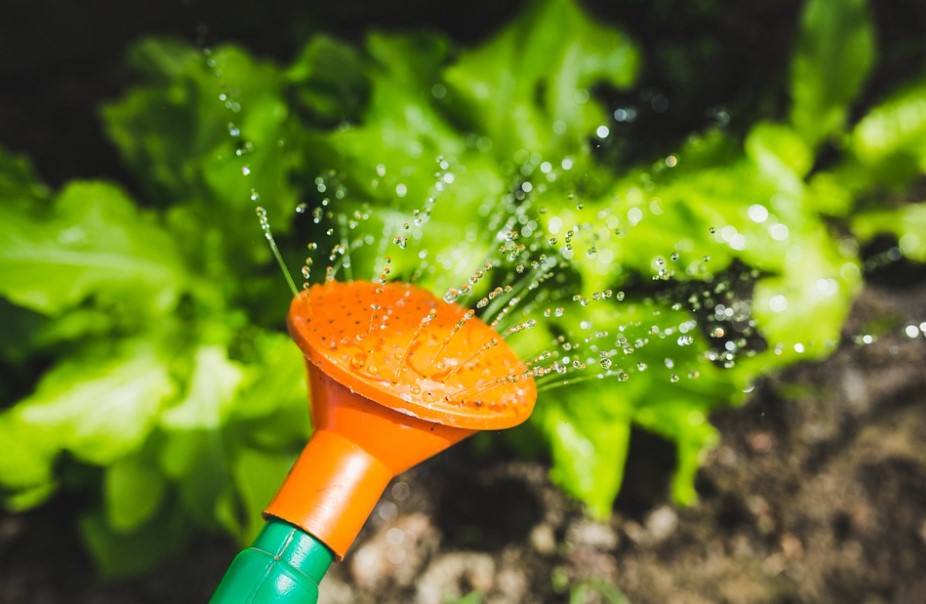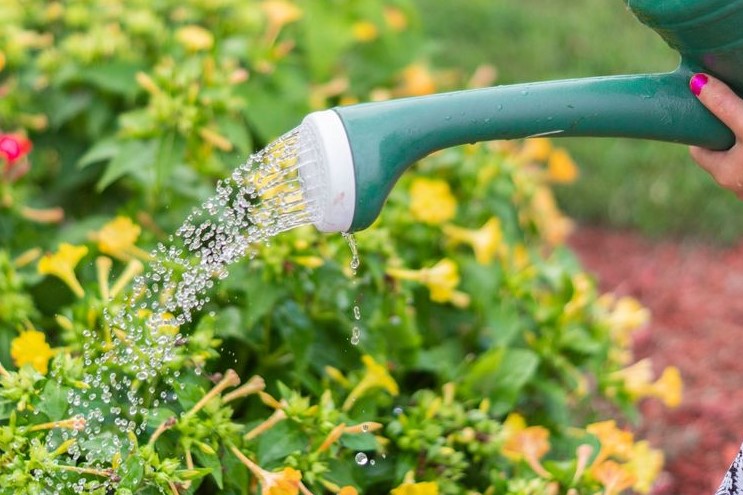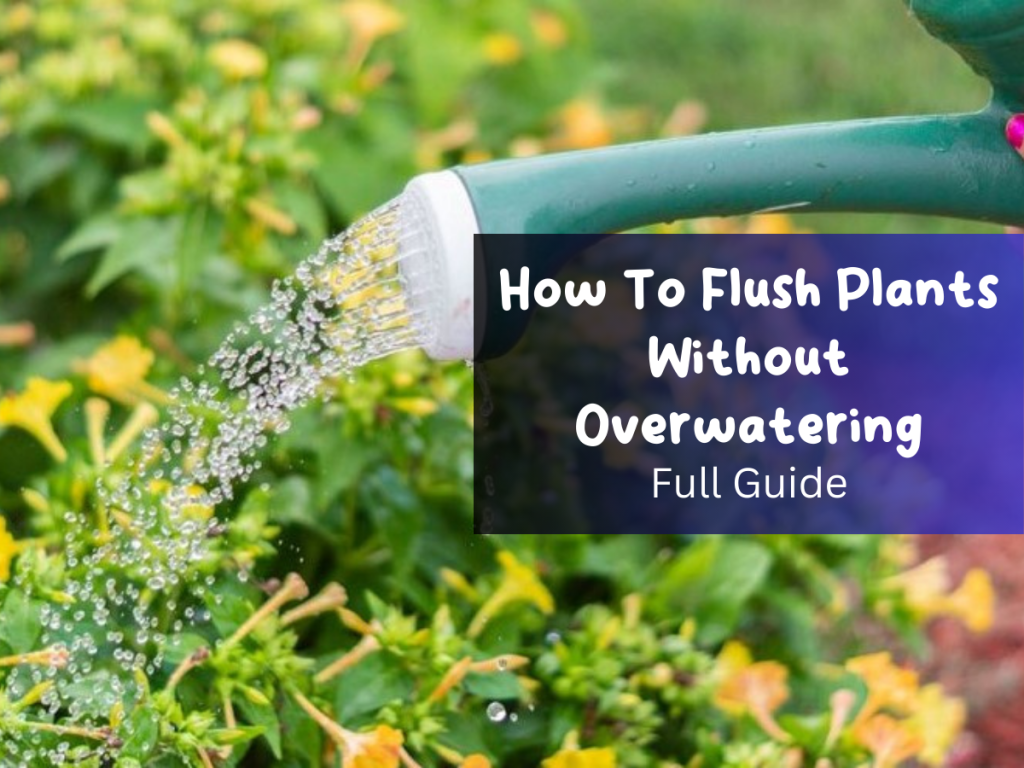Are you looking to learn how to flush plants without overwatering? Mastering this essential technique is crucial for maintaining plant health and preventing water-related issues. In this guide on “How To Flush Plants Without Overwatering,” we will explore effective methods to ensure optimal plant hydration while avoiding the pitfalls of excessive watering.
Understanding Flushing and Its Benefits
Flushing is leaching out accumulated salts and excess nutrients from the soil. Over time, these elements can build up and disrupt the plant’s ability to absorb nutrients properly. Flushing helps restore the natural pH balance of the soil and ensures that plants receive the right amount of essential nutrients. The benefits of flushing include promoting healthy root development, preventing nutrient deficiencies or toxicities, and enhancing overall plant vitality.
Determining the Flushing Frequency
The flushing frequency depends on plant species, growth stage, and growing medium. As a general guideline, flushing is recommended every 1-2 months or when signs of nutrient imbalance appear, such as leaf discoloration or stunted growth. However, monitoring your plants closely and adjusting the flushing schedule based on their specific needs is crucial. Each plant is unique, so paying attention to their requirements is vital.

Choosing the Right Flushing Method
Several effective flushing methods are available, each with advantages and considerations. Let’s explore two popular techniques:
a. Soil Flushing
- Prepare pH-balanced water: Start by preparing a generous amount of water with a pH level close to neutral (around 6.0-7.0). You can use a pH testing kit to ensure accuracy.
- Gradually pour water onto the soil: Slowly pour it onto it, allowing it to seep through and carry away excess salts and nutrients. Be mindful not to flood the soil or cause waterlogging.
- Ensure proper drainage: Adequate drainage prevents water from stagnating around the plant roots. Adjust the pot or container to ensure adequate drainage and avoid root rot.
- Repeat the process: Repeat the flushing process until the water runoff appears clear, indicating successful flushing; this may require several rounds of flushing, depending on the severity of nutrient buildup.
b. Hydroponic Flushing
- Drain the existing nutrient solution: For hydroponic systems, start by draining the existing nutrient solution from the reservoir.
- Refill with fresh, pH-balanced water: Refill the reservoir with new water appropriately balanced to a neutral pH level.
- Allow plants to uptake fresh water: Allow the plants to uptake the fresh water, ensuring it reaches all parts of the root system. This process helps to flush out any accumulated salts or excess nutrients.
- Repeat the process: Repeat for a few cycles until the runoff shows no signs of nutrient buildup. Monitoring the electrical conductivity (EC) levels may be necessary to ensure proper flushing.
Monitoring Watering Practices
It is crucial to develop a watering routine based on plant needs to avoid overwatering during flushing or regular watering. Consider the following tips:
a. Observe plant signals
- Monitor soil moisture: Check the soil’s moisture level by inserting your finger into the top inch or two. If it feels dry, it’s time to water.
- Look for signs of wilting or drooping leaves: Wilting or drooping leaves often indicate the plant needs water. However, it’s essential to differentiate between underwatering and overwatering symptoms.
- Avoid watering when the soil is still damp: Overwatering can suffocate the plant roots and lead to rot. Therefore, letting the soil dry out slightly before watering again is essential.
b. Watering techniques
- Water profoundly and thoroughly: When watering, ensure that the water penetrates deeply into the root zone. Superficial watering can lead to shallow root growth.
- Use a watering can or a gentle stream: To prevent soil erosion and water wastage, use a watering can or a gentle stream to deliver water directly to the soil around the plant.
- Allow the soil to dry out slightly between watering sessions: Allowing the soil to dry out somewhat between watering sessions promotes healthy root growth and prevents overwatering.

Improving Drainage and Soil Structure
Proper drainage is crucial to prevent overwatering. Consider the following tips to optimize drainage:
a. Amend the soil
- Incorporate organic matter: Improve the soil structure by incorporating organic matter such as compost or perlite. These amendments enhance aeration, drainage, and water retention capacity.
- Avoid compacted soil: Compacted soil can hinder drainage and cause water to pool around the plant roots. Regularly loosen the soil to promote better water movement.
b. Use adequate containers
- Ensure drainage holes: When choosing containers, ensure they have adequate drainage holes to allow excess water to escape.
- Elevate containers: Elevate containers slightly using pot feet or bricks to facilitate better airflow and prevent water stagnation.
Maintaining Proper Humidity Levels
Humidity levels significantly impact the water requirements of plants. Consider the following guidelines:
a. Monitor humidity
- Invest in a hygrometer: Use a hygrometer to measure humidity levels accurately. This tool can help you make informed decisions about watering frequency.
- Adjust watering routine: High humidity levels can slow the drying process, leading to a higher risk of overwatering. Adjust your watering routine accordingly based on the humidity levels in your growing environment.
b. Provide adequate ventilation
- Promote air circulation: Enhance air circulation around your plants by using fans, opening windows, or creating airflow with strategic positioning.
- Prevent excess moisture buildup: Proper ventilation helps prevent excess moisture buildup, reducing the chances of overwatering and creating a healthier growing environment.
Conclusion for How To Flush Plants Without Overwatering
Flushing plants without overwatering is vital for every gardener or plant enthusiast. You can balance nutrient removal and optimal hydration by understanding the flushing process, choosing the proper technique, and monitoring watering practices. Remember to observe your plants closely, tailor your flushing schedule to their needs, and create a suitable environment that promotes proper drainage and humidity. With these tips, you’ll be well on your way to cultivating thriving plants and enjoying the beauty of a lush and vibrant garden. Happy growing! Read article about The Leggy Pilea and How to Preserve Willow Branches in Avi Hoffman Garden.







